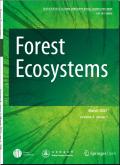The diameter of beech snags is an important factor for saproxylic beetle richness: Implications for forest management and conservation
Abstract
Snags are an important component of beech forests that promote biodiversity. However, their occurrence is completely marginal in managed stands. Creating snags in these stands would greatly enhance biodiversity. We investigated whether snag dimensions were important for saproxylic beetle richness since they were easily transferable parameters to forest management and assessed the presence of other snag microhabitats affecting beetle communities. Data collection was performed using passive flight traps placed on thirty snags in a recent beech reserve. A total of 6706 adults belonging to 231 saproxylic species (53 Red List species, 23%) were captured. The results showed that the most important snag parameters were the diameter (thickness) and canopy openness of the surrounding stands. The occurrence of Fomes fomentarius, the volume of snag and decay class 3 were marginally significant in terms of the preference of all saproxylic species. Alpha diversity was reduced by an advanced degree of decay and a surprisingly deep stem cavity. After dividing snag thickness into categories (<35 cm; 35–70 cm and >70 cm DBH), we found that categories with snag diameter greater than 35 cm showed little differences in all saproxylic and Red List species richness and diversity indices and exhibited the highest similarity in beetle communities. Regarding recommendations to forest managers in terms of optimization and simplification of practical procedures, we suggest actively creating high stumps to act as snags greater than 35 cm in DBH diameter to promote biodiversity in beech management stands.

| 公司名称 | 产品信息 | 采购帮参考价格 |
|---|
 求助内容:
求助内容: 应助结果提醒方式:
应助结果提醒方式:


